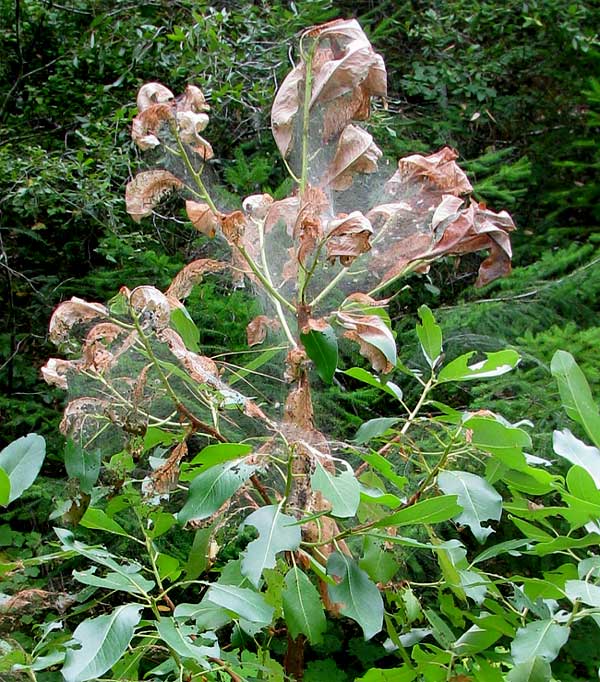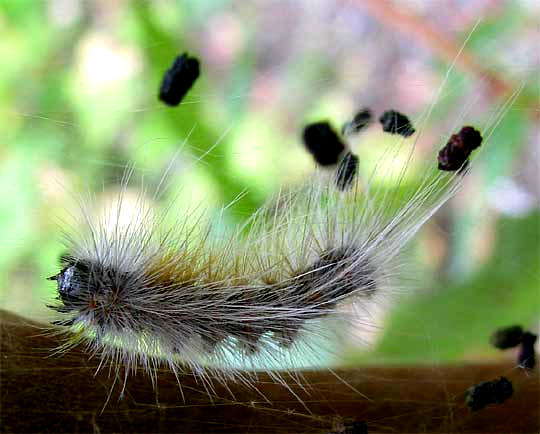Excerpts from Jim Conrad's
Naturalist Newsletter

from the September 20, 2009 Newsletter, issued from the Siskiyou Mountains west of Grants Pass, Oregon:
FALL WEBWORMS
Lately large, silken "tents" have been showing up on the area's young Madrone trees, as shown above. The tents reminded me of those of Eastern Tent Caterpillars so my first guess was that here might be the Western version. However, the caterpillars didn't look at all like Eastern Tent larvae, as you can see below.

The USGS produces a nice section on "Caterpillars of Pacific Northwest Forests and Woodlands" downloadable in PDF format at https://www.fs.fed.us/foresthealth/technology/pdfs/MILLER_LEPIDOPTERA_WEB.pdf With that I determined my caterpillar as the Fall Webworm, HYPHANTRIA CUNEA. The site said that "This caterpillar is very common on numerous plants, in particular willow, alder, and black cottonwood, during August and September."
My caterpillar looked whiter than other Fall Webworms shown on the Internet, however, so I conferred with my insect expert, Bea in Ontario. She agreed with my ID and also told me that the large silk webs enclosing tips of branches are sure signs of fall webworms. The caterpillars remain inside the webbing, and if food runs out new foliage is encased.
That observation about enclosing leaves and small branches is exactly what my first picture shows, but don't tent caterpillars do the same? I went back and looked at the Eastern Tent Caterpillar tent photographed in Mississippi this spring, still seen at http://www.backyardnature.net/n/a/tentcatr.htm.
In that picture and others on the Internet sometimes leaves are indeed included within the net, but mostly tent caterpillar nets are built in limb crotches and other "limby" situations, as in my Mississippi picture. Enclosing the entire branch tip along with its leaves is really a webworm thing.
Fall Webworm larvae have been known to feed on over 85 species of trees in the United States. In fact Fall Webworms are considered to be one of the most "polyphagous" -- feeding on many hosts -- of all insects. Though the webs are regarded as unsightly by many humans, damage to most trees is insignificant.
Fall Webworms are native from Canada into Mexico and from coast to coast in the US. They are one of few insect species that have been introduced from North America onto other continents as invasive species, where they now occur from France to the Caspian Sea, plus Japan, Korea and China.